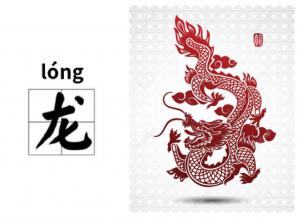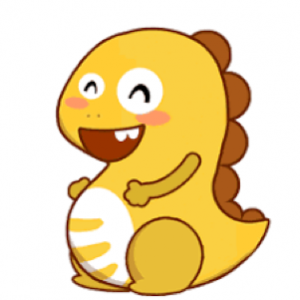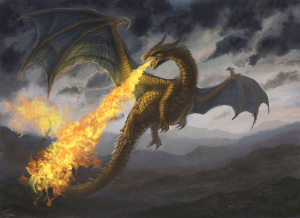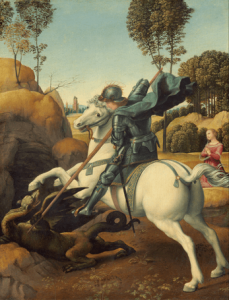Chinese Culture| What is the difference between Chinese and Western Dragons?
The Dragon is the most significant symbol of China, and Chinese may refer to themselves as “descendants of the dragon.” This may sound quite odd to Western people as dragons are seen as evil and unlucky in western culture. Therefore, it is important to explore the contrast between this mythological creature in Chinese and Western culture to better understand China and Chinese culture.
Chinese Dragons
In Chinese, the dragon is called “龙”. The Chinese dragon is considered to be like a giant snake, made up of different animal parts: the tail of a fish, the scales of a carp, the neck of a snake, the belly of a clam, the head of a camel, the claws of an eagle, the paws of a tiger, the ears of a cow, the eyes of a demon, the beard of a goat, and the horns of a stag. Though most Chinese dragons are wingless, male dragons possess the power to fly.

Dragons are powerful creatures in Chinese mythology, and they represent many virtues:
- Everything male – Like the dragon, males were considered strong and powerful. The dragon embodies masculine strength.
- Nobility – Emperors in ancient China were identified as the sons of dragons. In the past, ordinary people were not allowed to have items with pictures of dragons on them. Dragons are seen as regal, noble creatures.
- Agricultural life – In Chinese mythology, dragons could control the weather and the seasons. In traditional times, Chinese farmers requested plentiful harvests by making offerings to dragon gods.
- Good fortune – Chinese also believe that dragons could bring fortune and good luck. You may notice dragons engraved on utensils and personal items to attract the best life has to offer.
As “Long” has positive meanings for Chinese, it is used as mascot in many places, for instance, VIPKID (the parent company of Lingo Bus) uses Dino, a loveable dragon-like creature, as its symbol.

Western Dragons
In much of Western culture and legend, the dragon is usually portrayed very differently. Instead of bringing rain and good fortune, the Western dragon is a fire-breathing monster. They are seen in ancient legends, such as Beowulf. In the epic poem Beowulf, the dragon is the final beast that he must fight, and though Beowulf bravely defeats him, the poisonous dragon’s bite ends the hero’s life.
Dragons in Western culture are depicted with large wings like those of a bat, scales like a lizard, and the ability to breathe fire. They also usually have a tail with some sort of weapon-like tip. In the words of Smaug, the gold-thieving dragon from J.R.R.Tolkien’s The Hobbit, “My armor is like tenfold shields, my teeth are swords, my claws spears, the shock of my tail a thunderbolt, my wings a hurricane, and my breath death!”.

The associations with the Western dragon are generally negative, as well. In medieval times, the dragon was the symbol of evil, and Satan was referred to as “the great dragon”. Saint George is honored as heroic and valiant for killing a vicious dragon. Also, medieval knights could obtain honor, property, amazing power, and the hearts of women by hunting dragons. Since the dragon was the enemy of human beings, slaughtering a dragon became the symbol of bravery and conquering the forces of evil. Knights and kings would often have pictures of dragons on their shields or crests. This symbolized their valor in defending against fierce and wicked adversaries.

The differences between Chinese dragons and Western ones is just the tip of the iceberg in the cultural differences between China and the West. Register with Lingo Bus to learn more interesting Chinese culture facts!

